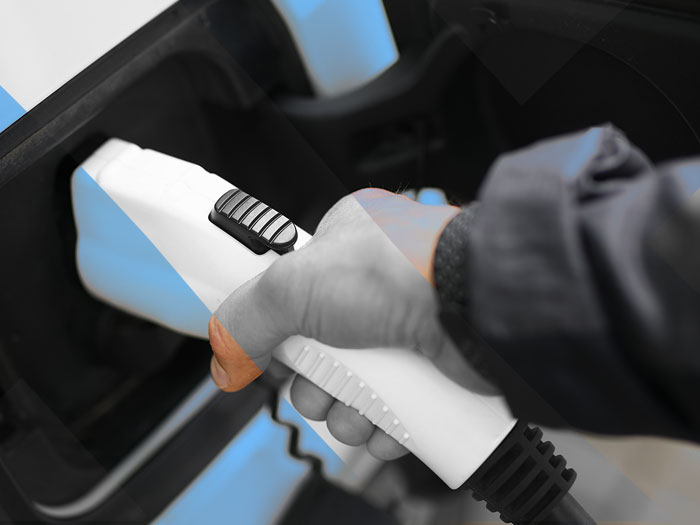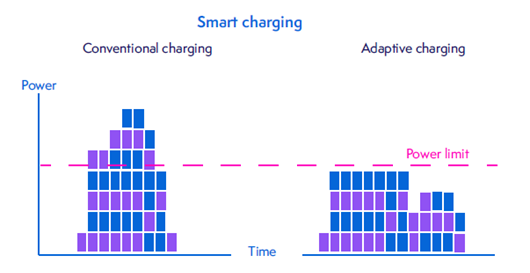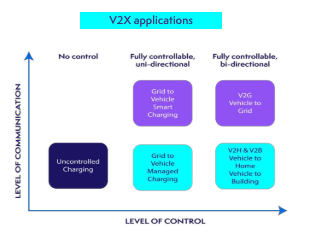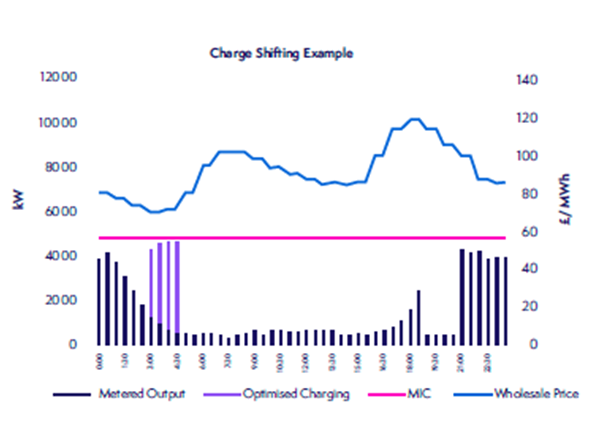News
better business decisions
Posted 1 year ago | 9 minute read

Connecting electric vehicle fleets
When preparing to transition your fleet to electric vehicles (EVs) there is more to consider than just the cost of the vehicles. Connection to the electricity grid requires collaboration between a multitude of different stakeholders, as well as compliance with numerous laws and regulations.
Assessing your power needs
The first step is to assess your site’s current electricity usage and when it occurs. This will help determine your maximum demand, or the highest amount of electricity consumed at your location.
At this stage, it is important to determine how many chargers you need and what type (e.g., rapid or slower chargers). Rapid chargers, while faster, will draw more power compared to slow or fast chargers.
Installing chargers
The next step is to determine the location for your EV chargers and explore your connection options. Depending on your power requirements, you have three potential options:
- Local Distribution Network Operator (DNO): Use a postcode search to find your local DNO
- National Electricity Transmission System (NETS): For larger installations, you may connect through National Grid Electricity Transmission in England and Wales, Scottish Power Transmission in South Scotland, or Scottish Hydro Electric Transmission in North Scotland
- Independent Distribution Network Operator (IDNO): Locate an IDNO that may also be available in your area
After selecting the appropriate connection provider, you should contact them to begin the process. They will work with you to ensure the connection is completed efficiently and smoothly. However, depending on your project requirements getting these connections can be costly and take a long time to get up and running.
Connection options
Several strategies can help you manage power demand on the grid and potentially lower connection and charging costs:
- Optimise existing power use: By adjusting your current electricity consumption (e.g., reducing power for equipment, lighting, or heating), you may free up capacity for EV charging without needing a network upgrade
- Load management: This allows for simultaneous charging of multiple vehicles but at a slower rate, ensuring you stay within your overall power limits
- Smart charging: A smart charging system manages when and how much your EVs charge, helping reduce costs and ensuring the grid can handle increased demand
- Timed profile connection: An arrangement where you agree to charge vehicles only during certain hours. This can lower costs by avoiding the need for a grid upgrade, especially if charging is done overnight when grid demand is lower
- On-site generation and battery storage: If your site can generate its own electricity (e.g., through solar panels), or if you can install a stationary battery, this stored energy can be used to charge your EVs, reducing your reliance on the grid
If none of the above options are viable, you’ll need to work with your grid operator to arrange for additional power to be supplied to your site. They will assist with the design and provide a quote for the work. Once the quote is accepted and paid for, the grid operator will schedule the necessary work to ensure the site is ready for the EV chargers.
Revenue opportunities
For grid operators, the first priority for accommodating electric vehicles in the power grid has been ensuring there will be enough electricity to fill them without causing blackouts elsewhere. But as EVs become more capable and start making up more and more of the market, there is increasing potential that EVs could also feed power back onto the grid during times of high demand, easing the need for new power plants and all they entail and presenting a revenue generating opportunity for fleet owners.
There are two main ways that EVs can be used to support the grid. The first and simplest way is through smart charging but a better way is through Vehicle to Grid (V2G) optimisation.
Smart (also known as managed or intelligent) charging is where an EV is charged in a way that spreads the load across a specific time scale. This is made possible through a system where an EV and a charging device share a data connection with a charging operator. It essentially allows the charging station owner to monitor real-time data such as supply and demand on the local electricity network and to manage the use of their devices remotely to optimise charging of the EV.
Consumers can benefit from cheaper power, and operators benefit from an easier to balance system by avoiding all cars being charged simultaneously. Smart meters have the potential to allow more detailed information on consumption to be sent to energy suppliers and more reactive use of power for customers.
An extension of smart charging, the concept of V2X. V2X is the overall term for different forms of bi-directional charging and discharging of the EV battery, including vehicle-to-grid (V2G), vehicle-to-building (V2H), and vehicle-to-load (V2L).
V2X systems use a combination of hardware and software, including vehicle controllers, inverters, and communication protocols, to enable the bi-directional flow of power and data between EVs and external systems. This mechanism permits the grid to draw on EVs’ stored energy to accommodate sudden surges in power requirements. The EV battery power is then replenished when the demand on the system is low.
One major benefit of V2X technology is its potential to stabilise the grid by providing additional flexibility and balancing services to better manage peak demand periods and reduce the need for peaker plants and thus allow for the integration of more renewable energy sources.
For end users, V2X technology can provide an additional revenue stream. EV owners can sell the stored energy in their vehicle’s battery back to the grid during peak demand periods, earning credits or cash payments. This can help offset the cost of owning an EV and reduce the total cost of ownership.


Supporting the grid: Case study
EV charging platform Monta and energy optimiser GridBeyond have partnered together to deliver pioneering technology that transforms charging points into valuable resources, contributing towards grid stability.
Monta is an operating platform powering the EV ecosystem serving drivers, companies, cities, and the electricity grid with one integrated software solution. The partnership with GridBeyond aims at helping to reduce stress on the electricity grid.
Electric vehicle charging stations are often concentrated in specific areas, especially urban centres. This can lead to a situation where the local grid struggles to meet the increased demand, affecting not only the charging of EVs but also the overall stability of the electricity supply to homes and businesses. Grid contribution becomes pivotal during times of imbalance – either an unforeseen dip in power generation or a surge in demand across the local distribution network or the wider power grid.
By working with GridBeyond, Monta’s managed EV chargers will be used as valuable demand side assets in the Capacity Market and SFFR (Static Firm Frequency Response) programmes. By pausing all ongoing charges, the electricity demand is also reduced matching the pattern set by the imbalance, stabilising the grid and earning revenues from participation of these flexible assets within market. Monta customers opt into the service via Monta’s “PowerBank” product.
“EVs have a huge opportunity to serve as a flexible asset to the grid if charging is managed correctly. We’re excited to partner with GridBeyond to deliver this pioneering service in the UK and Ireland.”
Regional Director Alok Dubey
“GridBeyond are delighted to be partnering with Monta in this innovate solution to help balance the local and national grids. As EV ownership grows, the opportunity that these types of services gives can provide a useful solution across the UK. We are looking forward to growing our relationship with Monta, who are a market leader in EV software related services”
Michael Kent, GridBeyond Head of EV Solutions.
By linking with Monta’s platform GridBeyond is able to provide market access to flexibility programmes in Great Britain, to forecast periods in advance where imbalances occur and aggregate the flexibility provided by Monta’s charges for dispatch under market programmes to earn maximum rewards for drivers.
Business benefits
For fleet owners and operators, integrating EVs into their operations presents not only environmental and operational benefits but also significant financial opportunities, especially when participating in demand response programs.
Participating in demand response programs allows EV fleet owners to earn incentives from grid operators. These programs offer financial rewards for reducing electricity usage during peak times or for supplying power back to the grid from their EV batteries.
By shifting charging times to hours when electricity is cheaper, fleet operators can significantly reduce their energy costs. Additionally, by selling excess stored energy back to the grid during high demand periods, fleets can create a new revenue stream, enhancing overall profitability and reducing the total cost of ownership for their fleets.
Engaging in demand response can contribute to better battery management for EV fleets. Intelligent charging strategies, which are a part of demand response, can prevent overcharging and deep discharging of batteries, leading to prolonged battery life. Optimised charging and discharging cycles ensure that batteries are used more efficiently and maintain their health over a longer period, reducing the frequency and cost of battery replacements.
Demand response programs often require fleet operators to adopt flexible charging schedules. This flexibility can lead to more efficient use of energy resources and improved overall operational efficiency.
By optimising charging times and leveraging off-peak electricity rates, fleets can minimize downtime and maximise the utilisation of their vehicles, ensuring that they are ready and available when needed for business operations while improving their ESG credentials.
Benefitting from flexibility: Case study
Example: EV bus fleet depot
Site characteristics:
- Fleet Charging Schedule assumed- 7pm to 5 am
- Buses arrive back at 15% SOC
- Charge time for bus is ~5 hours
Results:
- Optimised Charging based on Wholesale market prices
- For 2023, selling average flexibility of 3.5MW every weekday equates to Gross Revenues of £66k
- Additional savings on transmission (TNUoS) and distribution (DNUoS) charges realised


White Paper | Harnessing electric vehicles: Challenges and opportunities
As electric vehicles (EVs) continue to gain traction in the automotive market, there arises a novel opportunity to utilise these vehicles not only as consumers but also as contributors to the power grid. In this white paper, we examine the challenges and opportunities associated with integrating EVs.
Learn more




